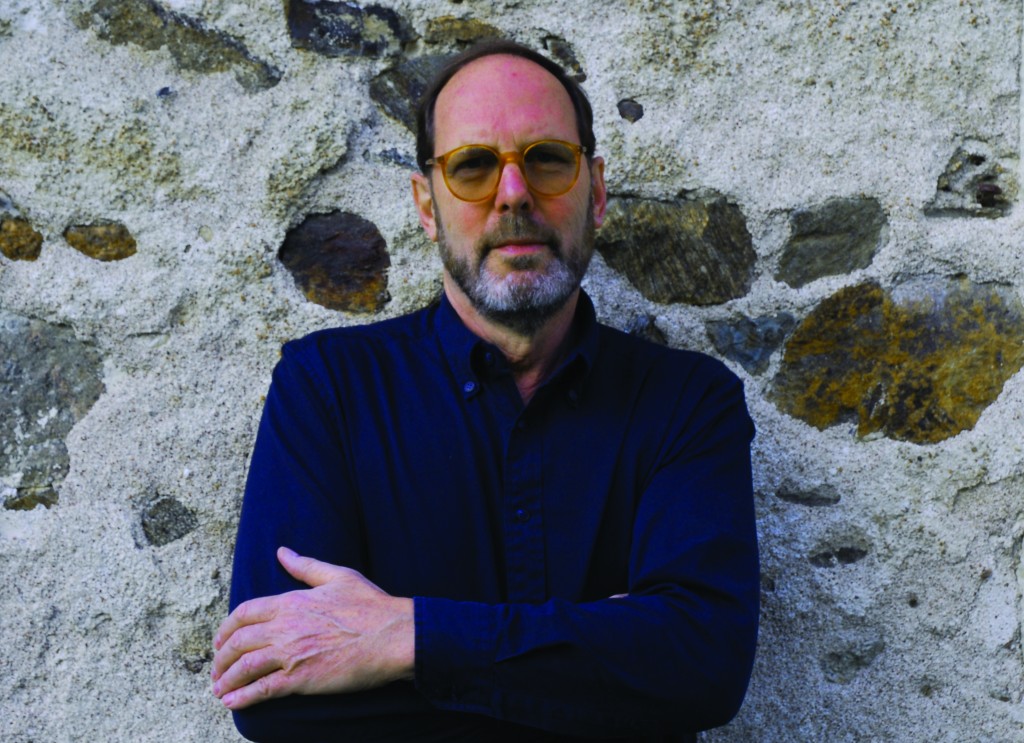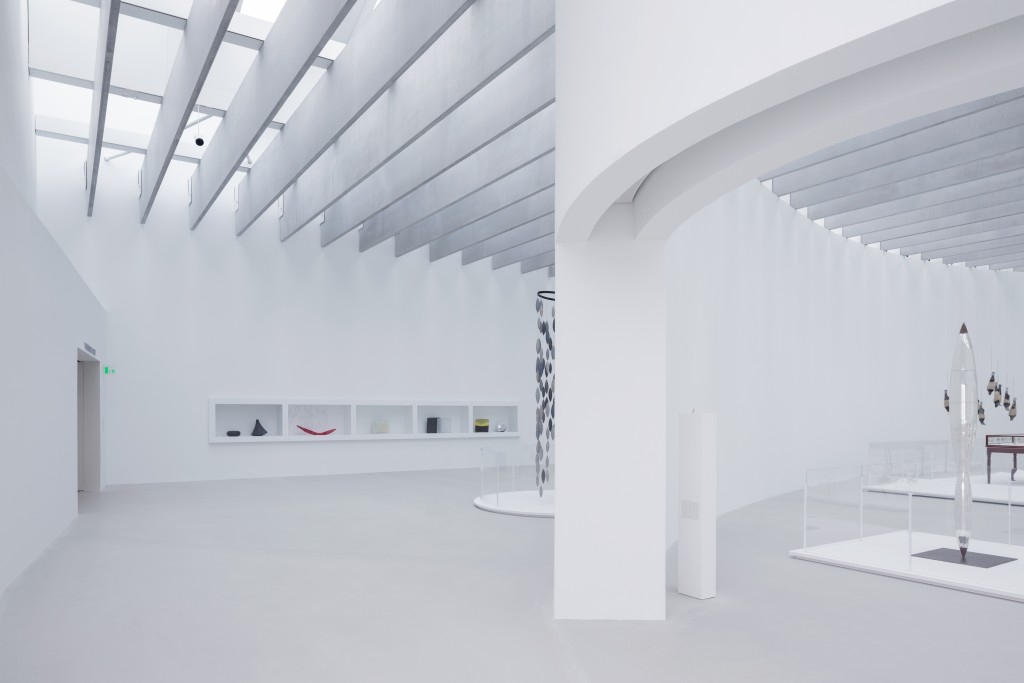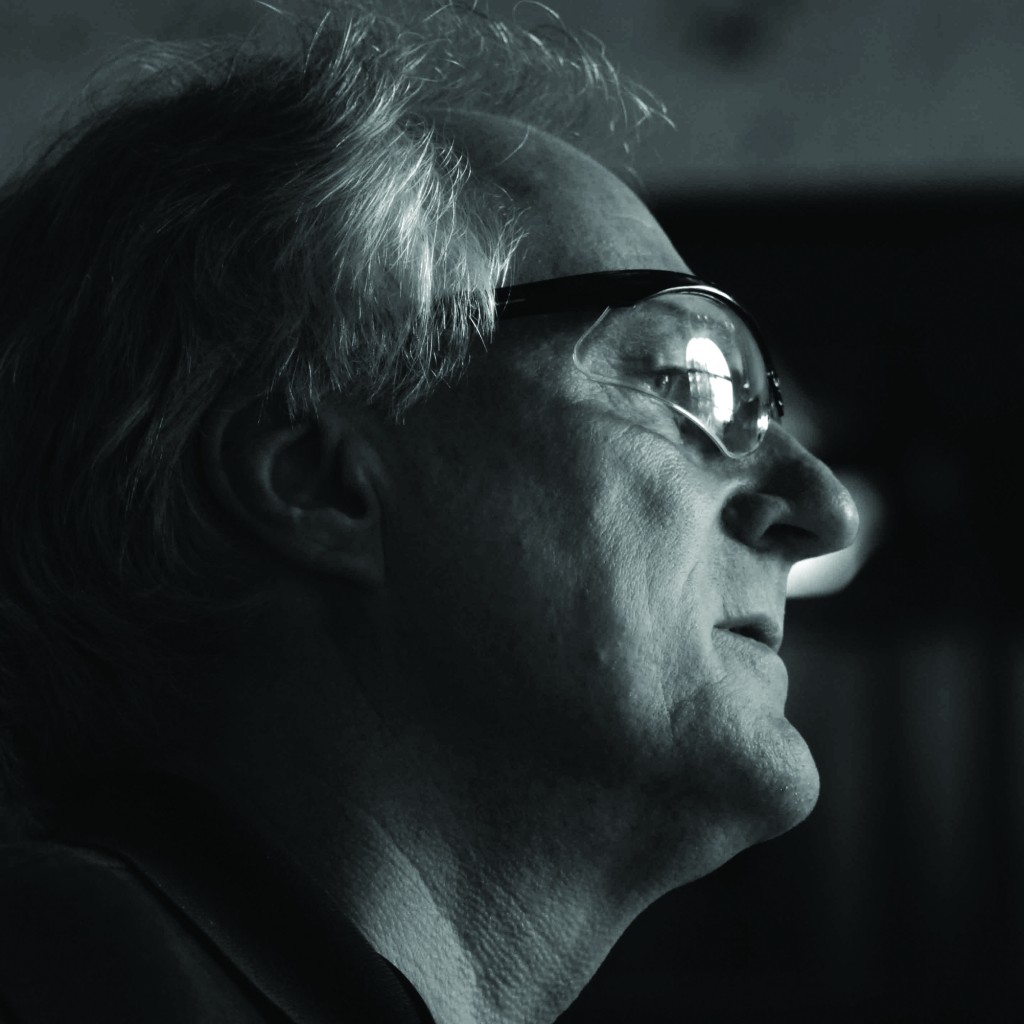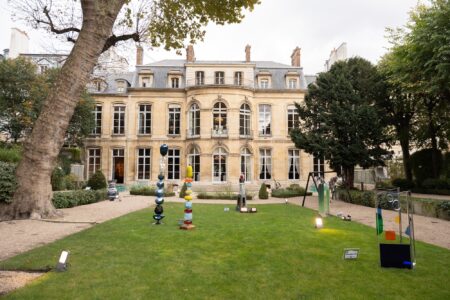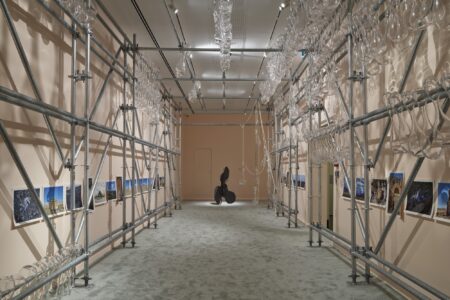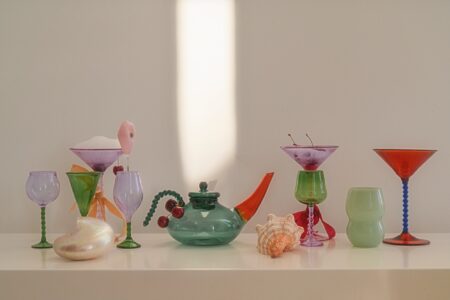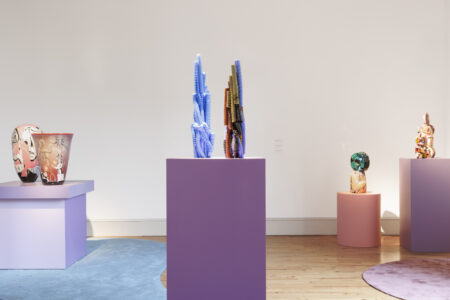GlassLab: Glass Collaboration Crosses the Atlantic
GlassLab by Corning Museum of Glass in New York provides designers a platform to experiment with molten glass. The GlassLab founders talk about matching traditional techniques and top-notch contemporary designers.
Responding to design’s move from heavy industry to more fluid and diversified disciplines – craft revival, limited edition applications and live performance – GlassLab is a mobile shipping container-mounted hot-shop and stage that reactivates cutting-edge glass production on multiple fronts.
Since first coming onto the scene, this innovative tool-cum-platform has travelled to numerous art and design venues including Design Miami/ Art Basel, the Vitra Campus and Cooper-Hewitt National Design Museum in New York. Having worked with designers such as Yves Béhar, the Campana Brothers, Nacho Carbonell, Matali Crasset, Max Lamb and Massimo Vignelli – GlassLab operates with a ‘they bring their sketchbooks, we bring the glass’ modus-operandi while also offering public sessions.
Growing out of a collaboration between the Corning Museum of Glass, interdisciplinary Haigh Architects and Domaine de Boisbuchet’s summer design workshops, GlassLab has held its annual Liquid Fusion programme since 2006. Together, all three partners have spent close to a decade stead-fast in their goal of furthering experimentation – giving designers the possibility to develop new forms and functions through the exploration of glass’ molten-state.
Having joined forces with these strong forces in July 2013 for a bespoke workshop, Glass is Tomorrow caught-up with Corning Museum of Glass’ Hot Glass Program Manager Steve Gibbs, architect Paul Haigh and Domaine de Boisbuchet founder Alexander von Vegesack to get their perspectives on glass production and the importance of cooperation.
Glass is Tomorrow: Where does your affinity for glass derive? How is this medium different from other artisanal production?
Steve Gibbs: We’re glass evangelists. Blowing a bit of glass is like having people gathered around a campfire. There’s this glob of glowing, molten goo that is magically turned into a beautiful art object before your very eyes. I love exploiting glass’ natural qualities; taking advantage of heat, gravity and its fluidity to create objects that can only be done in glass.
Paul Haigh: As a multidisciplinary studio, we’ve had many opportunities to let glass influence and inform our approach when engaging in architectural or design-based projects. In the mid-1990s, I was able to work with the famous Steuben Glass Works – an experience that ultimately directed me to design many glass-based galleries and exhibitions – including shows I’ve mounted at the Corning Museum of Glass.
Alexander von Vegesack: For thousands of years, across different cultures, glass has enabled countless innovations in art, craft and the design of products, transportation, communication, architecture, fashion, food, sports and many other domains.
How would you describe the process of developing and blowing glass-based designs?
SG: In 20-minutes you can see your idea take shape and determine if you want to go to next level. When designers see the material move, drip, glow, expand and contract, they respond to it directly and sometimes end up with wonderful results that are entirely different from what they initially intended. Furthermore, glassblowers are pushed out of their comfort-zones and develop surprisingly pleasing outcomes.
PH: Programmes like GlassLab and Glass Is Tomorrow offer access to a material and process traditionally found on an industrial scale. While for some designers, such an opportunity is the first contact they’ll have with glass, for others, it presents a hands-on framework that reassesses glassmaking in a design context. Designers tend to explore glass – its materiality, transparency, translucency and opacity – as a rich palette for innovation and intervention. I always try to examine the idea of glass as liquid – an ancient material that can transform process into poetry.
AvV: Glass is alive and almost never ages, always looks fresh and has enormous flexibility regarding shape, colour, resistance and application. This material emanates both beauty and danger.
What is the value of bringing designers and glassblowers together?
SG: GlassLab really opens up the world of glassmaking and allows designers to be playful. They can express their ideas without having to worry about the technical or budgetary issues that come with working in more commercial venues. They’re free to dream, and our glassmakers help them realize those dreams. Both actors learn from and push each other to new heights. It’s about taking someone with an idea or vision and putting them with someone who has the expertise to execute that idea.
PH: For me, providing designers access to glass through the direct proximity to glassmakers is fundamental in understanding the material and its possible applications. I’ve found – through my own work – that design responds well to good communication and the essentially empirical process that takes place between designers and glassblowers. The fabrication of prototypes in this relationship, leads to an invaluable cycle of refinement.
AvV: Great glass design can exist outside of this type of cooperation but not to same level.
What was your experience working with Glass Is Tomorrow?
SG: It was very stimulating and informative to work with European designers. The continent has such a rich history and tradition of working glass. It’s humbling to think that our joint efforts could affect the future of this craft in the region.
PH: Working with Corning Museum of Glass expert glassmakers, five Glass Is Tomorrow designers were immersed in exploring the theme of memory with in the immediate context of Southern France. Over the course of the five-day workshop, 100 pieces were created. Such an achievement furthered the value of challenging these creatives to explore glass design through concept ideation, prototyping and fabrication.
AvV: Glass Is Tomorrow added inspiring new talents and perspectives to Domaine de Boisbuchet’s longterm cooperation with the Corning Museum of Glass and Haigh Architects. •
Main image
Corning Glass Museum, New York, USA.
Glass Is Tomorrow is a European network, which aims at establishing more fluid exchange of knowledge and competencies between glass and design professionals in the north, south, east and west of Europe. Glass Is Tomorrow is initiated and organized by Brussels-based creative agency Pro Materia, which also publishes TLmagazine with Paris-based publishing house Bookstorming.


